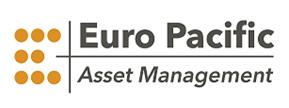- Friday, November 6, 2015
- Earlier today the government released the Non-Farm Payroll Report for the month of October
- I was told that this was the most import Non-Farm Payroll report ever
- They were looking for 190,000 jobs and we created 271,000 jobs
- Everybody now has jumped to the conclusion that a December rate hike is a lock
- There is nothing in this jobs report that indicates that
- The reason everybody believes that the Fed is like to raise rates is because Janet Yellen testified before Congress earlier in the week
- This is what the Fed Chair said about interest rates:
- If we get further improvements in the labor market and we make progress at achieving the Fed’s inflation goal of 2% in the medium term
- How much improvement and what kind? We don’t know, because thus far, no improvements have been enough to prompt a rate hike
- Yellen said that if we got those improvements, then a rate hike in December would be a “live possibility”
- This does not mean it will actually happen – it means it is possible
- She did not even use the word probable
- I don’t think the Fed is going to raise rates in December
- We have one more “most important” jobs report between now and December and this month’s numbers may be revised down, as others have
- From my perspective, if the Fed does not know that they will raise rates by now, they will not decide on the spur of the moment after a jobs report
- Even with positive economic news, the Fed still does not have to raise rates; they can come up with another excuse, real or unreal
- What happens if the stock market declines after a rate hike? what would the Fed do then?
- “Extend and Pretend” is working like a charm for the Fed now
- Getting back to today’s job’s report:
- This is the strongest month of the year following the two weakest months of the year
- Both of those months arrived with expectations of upward revisions, and they did not happen
- The three month average is 187,000 jobs
- The last three months have been slower than any prior three month period this year
- Last year, the 3-month average was about 250,000+ jobs
- So the job market is much slower this year than it was last year when the Fed was looking for “more improvements” before raising rates
- The unemployment rate did decline, but so far no positive data on unemployment rates have prompted the Fed to raise rates
- The Labor Force Participation Rate stayed at 62.4% which matches the low of this so-called recovery
- So we are not seeing more people entering the labor force
- This is not a sudden accelleration in the pace of job growth
- Let’s look at the quality of the jobs:
- Most of the jobs, about 200,000 of the 271,000 jobs added are low-paying service sector jobs
- In second place, at 45,000, is temporary help
- Third place, at 44,000, is retail trade
- The fourth largest category is leisure and hospitality
- Manufacturing, mining, logging, transportation sectors lost jobs
- Where it really gets bad is in the demographics:
- All job gains went to people 55 and older
- People under the age of 55 lost 35,000 jobs
- If you look at the gender, men from 25 – 54 lost 119,000 jobs
- What would explain this?
- Older people can no longer afford to be retired, and are supplementing their retirement incomes
- Some of the older people are taking better jobs because they are more experienced
- Why are more women getting jobs?
- Women who were previously homemakers also need to supplement their incomes
- When you look at the demographic numbers, it is further proof that the Fed’s explanation of the labor force participation rate is wrong
- The Fed claims the participation rate is due to retiring Baby Boomers
- The people who should be buying houses are the younger ones who are not getting jobs
- Freddie Mack reported its first quarterly loss in 4 years
- This is with rates still at zero
- Imagine the losses if the Fed raises rates?
- Also later in the day today, the government reported a record increase in consumer credit led by auto loans and student loans – two more bubbles!
- The U.S. government now holds almost a trillion dollars in consumer-backed loans, fueled by the Fed’s cheap money
- Why would the Fed want to prick that bubble?
- The markets once again were fooled by the Fed, they got this jobs report
- The dollar soared almost back up to 100
- Gold tanked below 1100
- When the Fed didn’t raise rates in October, gold was at 1190 so it has dropped about $100 since then
- All this happened just because of a mere possibility
- This is what the Fed wants to achieve
- It was interesting, though, that the markets did not sell off
- I would not be too complacent – the Fed may not be able to convince everybody that rates are going up
- Some feel the Fed might raise rates, but later cut them again based on the data
- That might be a very dangerous line for the Fed to walk
- If the Fed were to raise rates, it would accelerate the schedule for cutting them again, and increase the possibility of QE4
- It is better for the Fed to keep pretending they will raise rates, and then don’t do it
Podcast: Download










